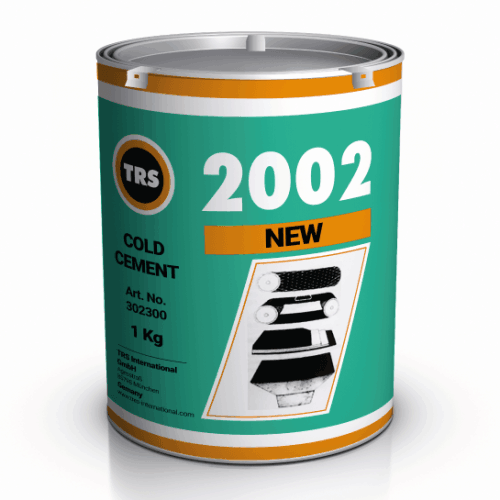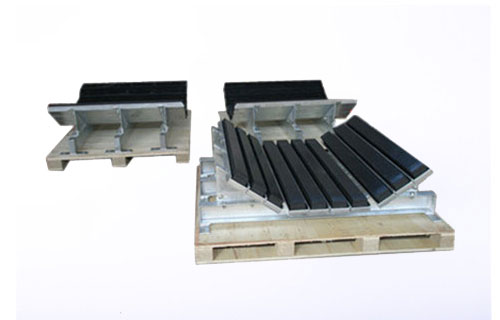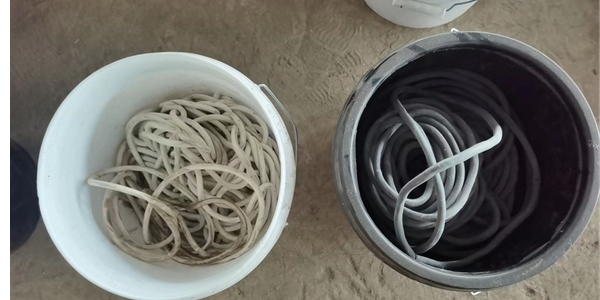Characteristics of the T2 Repair System
Main Materials:
T2 Composite Adhesive Gun: Used to heat, mix, and extrude T2 composite adhesive strips AB.
T2 Composite AB Adhesive: Acts as a primer to enhance the adhesion of the bonding surface.
T2 Composite AB Adhesive Strips: Dual-component adhesive strips that form a high-strength vulcanized adhesive after mixing in the gun.
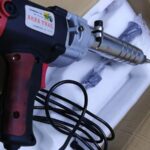
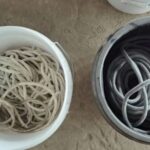
Repair Principle:
Utilizes a chemical cold vulcanization reaction to form strong chemical bonds between the glue strips and the substrate, achieving repair strength close to that of hot vulcanization.Requires no large equipment, is easy to operate, and is ideal for on-site rapid repairs.
Applicable Scenarios:
Local damage, scratches, or hole repairs on conveyor belts. Sealing of rubber lagging seams on rollers. Quick repairs for small, high-wear areas.
Operation Process of the T2 Repair System
1. Surface Preparation
Cutting and Grinding:Use an angle grinder or grinding wheel to cut the damaged area into a regular shape (e.g., rectangle or circle) and grind it to a rough surface (roughness Ra ≥ 20μm).The grinding area should be slightly larger than the damaged area to increase the bonding surface.
Cleaning and Drying:Use a specialized cleaner (e.g., DLZB CLEAN) to thoroughly remove oil, dust, and moisture.Allow the surface to dry until no visible residue remains (usually 5-10 minutes).
2. Applying Primer
Mixing Primer: Mix T2 Composite Adhesive A and B in a 1:1 ratio until the color is uniform. Application Requirements: Apply a thin, even layer of primer to the repair surface to form a bonding transition layer.Wait for the primer to dry until it is tack-free (not sticky to the touch).
3. Loading and Mixing in the T2 Adhesive Gun
Loading Adhesive Strips: Insert T2 Composite Adhesive Strips A and B side by side into the gun’s feed port.
Heating and Mixing: Activate the gun’s heating function (usually 60-80°C) to soften the adhesive strips, which are then mixed through spiral extrusion. Ensure thorough mixing to avoid uneven extrusion.
4. Extruding Adhesive and Compacting
Extrusion Operation:Squeeze the gun trigger at a steady speed to continuously extrude the mixed adhesive onto the repair surface.Fill in layers or spiral stacks to avoid air bubbles.
Compaction:Use a compaction roller to roll from the center to the edges, expelling air and ensuring tight adhesion between the adhesive and the substrate.
For multi-layer repairs, ensure the next layer is applied before the previous layer fully vulcanizes.
5. Finishing and Curing
Surface Finishing:Use a knife to trim any protrusions or burrs, ensuring a smooth transition between the repair surface and the original surface.Fine repairs can be sanded with sandpaper.
Curing Time:Initial curing takes about 2-4 hours at room temperature, with full strength achieved after 24 hours (specific time depends on temperature and humidity).
The repaired area can be put into use immediately after curing.
Advantages of the T2 Repair System
High Efficiency and Speed: No equipment disassembly required, on-site operation, short repair time, and minimal downtime.
High Repair Strength: Cold vulcanization forms chemical bonds with the substrate, achieving adhesion strength close to hot vulcanization.
Ease of Operation: No large equipment needed; the portable glue gun suits various scenarios.
Instant Usability: Can be put into service immediately after curing, with no long waiting period.
Limitations of the T2 Repair System
Higher Cost: The T2 glue gun, A/B compound strips, and A/B compound glue are relatively expensive, limiting widespread use; Limited Applicable Area: Best suited for small-area repairs; large-area repairs are costlier and less efficient; High Skill Requirement: Requires proficiency with the T2 repair gun to avoid uneven mixing or inconsistent extrusion.
Recommended Application Scenarios
Local Damage on Conveyor Belts: Such as scratches, tears, and holes.
Sealing Joints on Roller Coverings: Prevents water leakage or detachment at joints.
High-Wear Area Repairs: Such as in mining or port environments.
Emergency Repairs: Scenarios requiring rapid production recovery.
Precautions
Environmental Conditions: Recommended operating temperature is 5-40°C; high humidity may require extended drying time.
Material Compatibility: Use only T2 A/B Compound Strips and Glue; standard materials cannot achieve cold vulcanization.
Safety Measures: Wear gloves and goggles to avoid contact with uncured compounds.
Equipment Maintenance: Regularly clean the T2 extrude gun to prevent blockages from residual material.
In summary, the T2 repair system achieves efficient and high-strength on-site repairs through precise mixing and extrusion with the T2 extrude gun, combined with a chemical cold vulcanization reaction. Its core lies in surface preparation, uniform adhesive mixing, and operational standardization. The T2 repair system serves as an excellent alternative to traditional rubber repair strips and hot vulcanization in scenarios requiring rapid repairs and stringent strength requirements.

